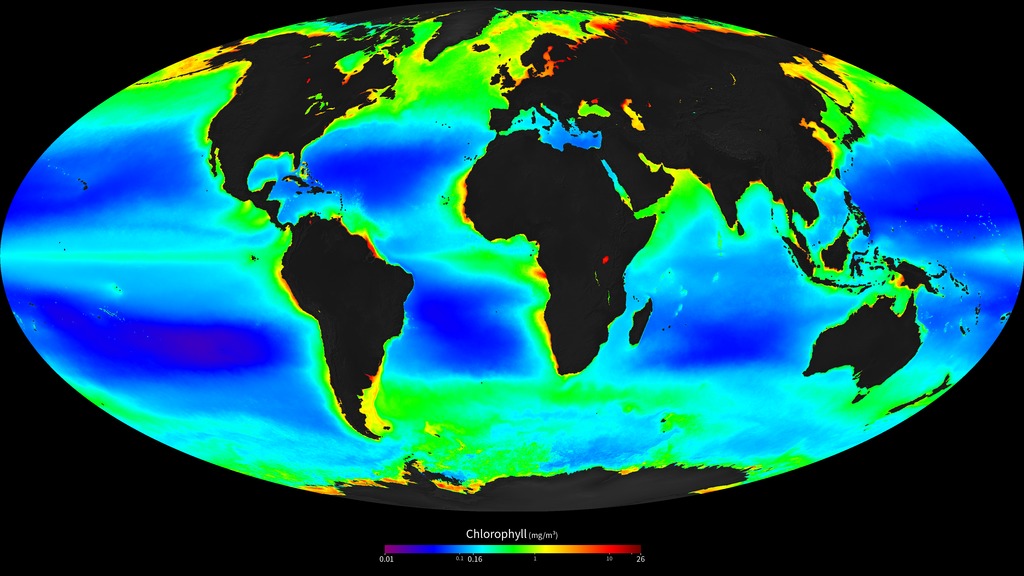A Decade of Ocean Color
A decade of observations from the SeaWiFS satellite are represented in this image, which shows average chlorophyll concentrations in Earth’s oceans from mid-September 1997 through the end of August 2007. Areas where plants thrive are light blue and yellow, while less productive regions are dark blue. The satellite records the amount of light that chlorophyll is soaking up as the plant converts light, water, and carbon dioxide into glucose and oxygen through photosynthesis. In general, high chlorophyll corresponds with a high number of healthy plants. The global relationship between temperature and productivity was one that scientists first observed in SeaWiFS data. The places with the lowest chlorophyll concentrations are in the tropics, while the cold waters in the Arctic and Antarctic have high chlorophyll concentrations. What the image does not show is that the growth at the poles is seasonal. The plants only flourish during the spring and summer when there is sufficient light to fuel photosynthesis.

A decade of observations from the SeaWiFS satellite.
For More Information
Credits
Please give credit for this item to:
NASA/Goddard Space Flight Center, The SeaWiFS Project and GeoEye. NOTE: All SeaWiFS images and data presented on this web site are for research and educational use only. All commercial use of SeaWiFS data must be coordinated with GeoEye (NOTE: In January 2013, DigitalGlobe and GeoEye combined to become DigitalGlobe).
-
Project support
- Marit Jentoft-Nilsen
- Mark Malanoski (Global Science and Technology, Inc.)
Release date
This page was originally published on Monday, October 21, 2013.
This page was last updated on Tuesday, November 14, 2023 at 12:24 AM EST.
Datasets used in this visualization
-
Chlorophyll Concentration [SeaStar: SeaWiFS]
ID: 469All SeaWiFS images and data presented on this web site are for research and educational use only. All commercial use of SeaWiFS data must be coordinated with GeoEye.
Credit: NASA/Goddard Space Flight Center, The SeaWiFS Project and GeoEye, Scientific Visualization Studio. NOTE: All SeaWiFS images and data presented on this web site are for research and educational use only. All commercial use of SeaWiFS data must be coordinated with GeoEye (NOTE: In January 2013, DigitalGlobe and GeoEye combined to become one DigitalGlobe.).
This dataset can be found at: http://oceancolor.gsfc.nasa.gov/PRODUCTS/
See all pages that use this dataset
Note: While we identify the data sets used in these visualizations, we do not store any further details, nor the data sets themselves on our site.
